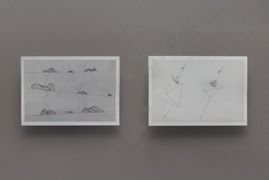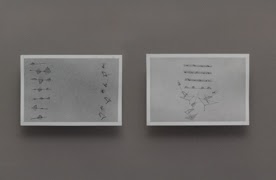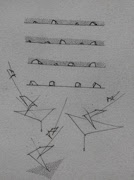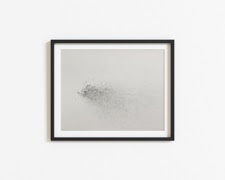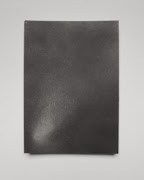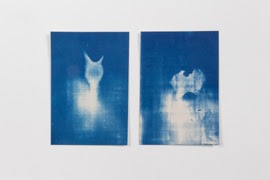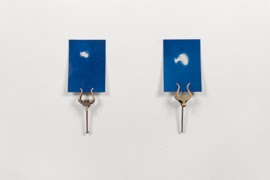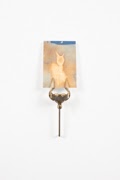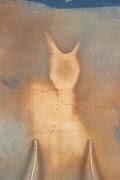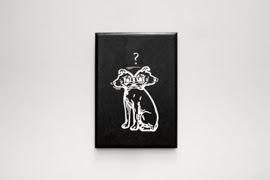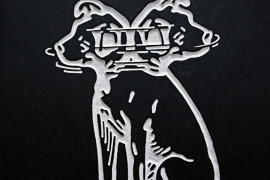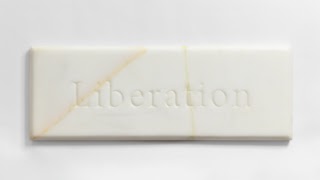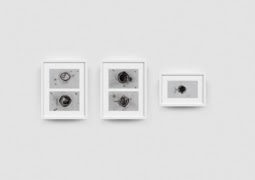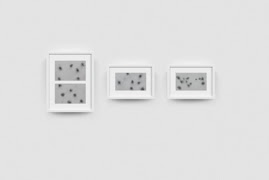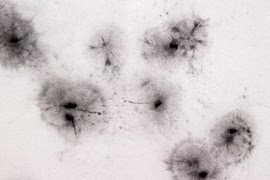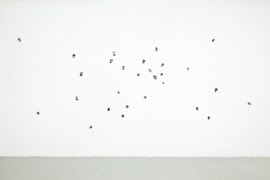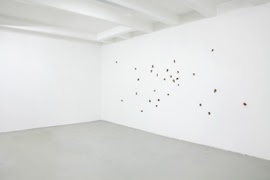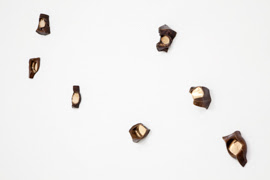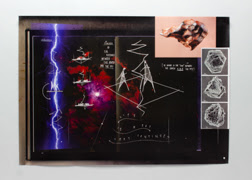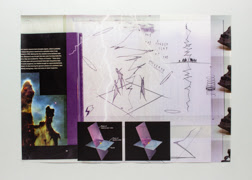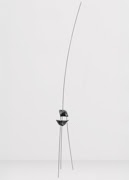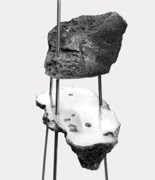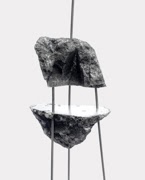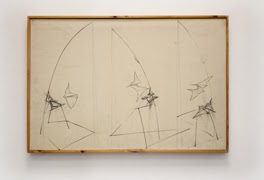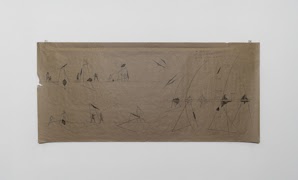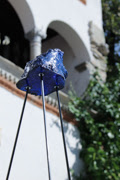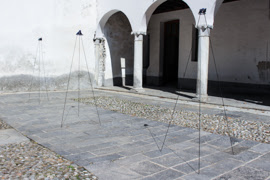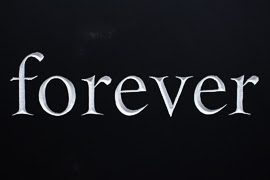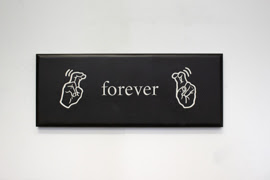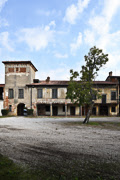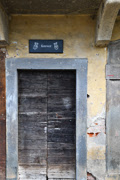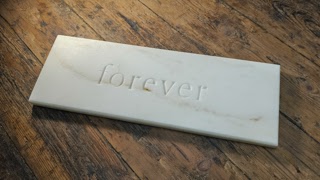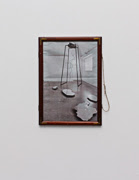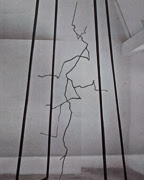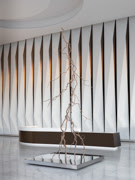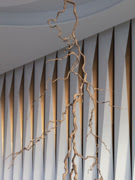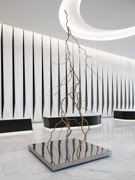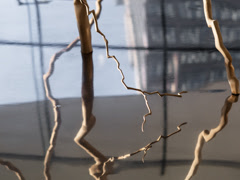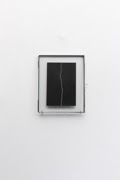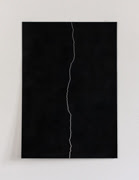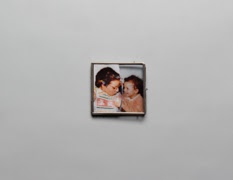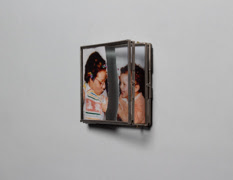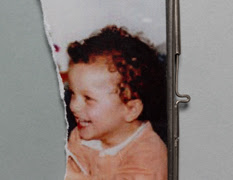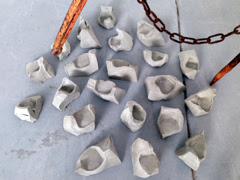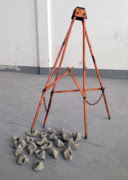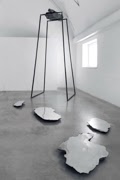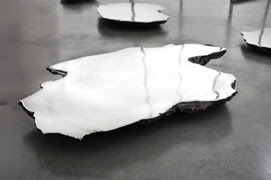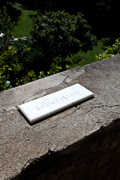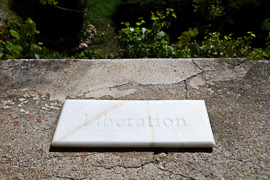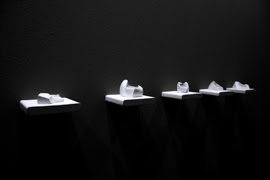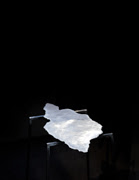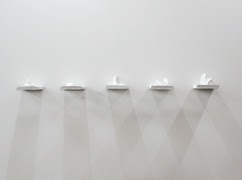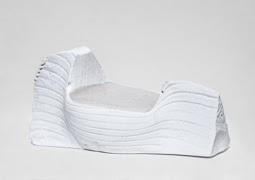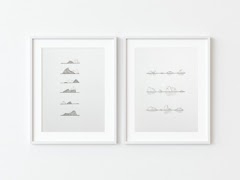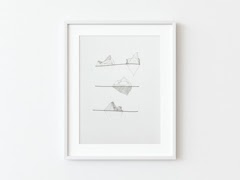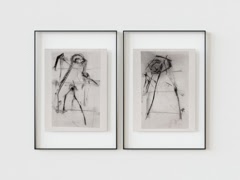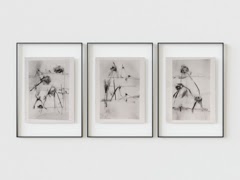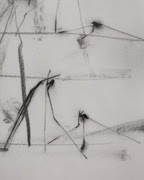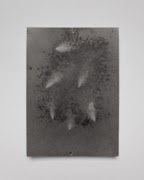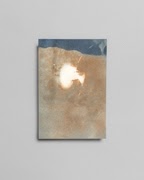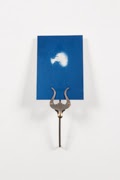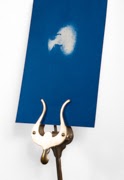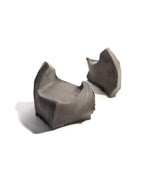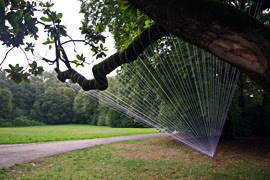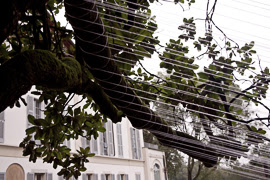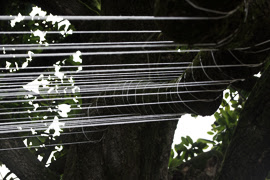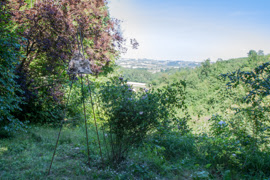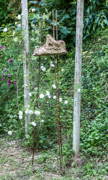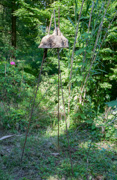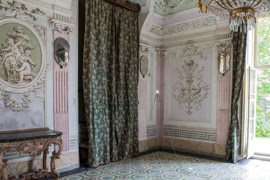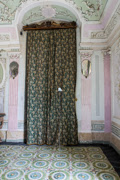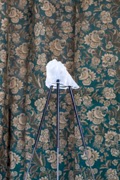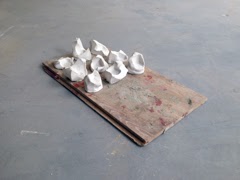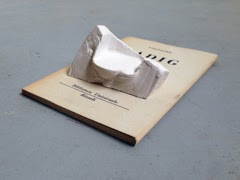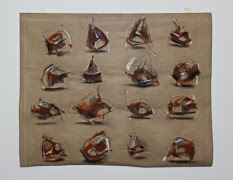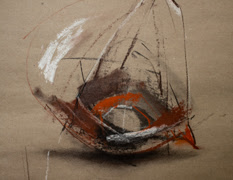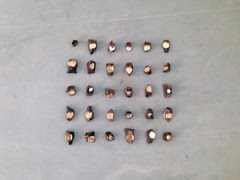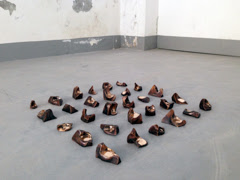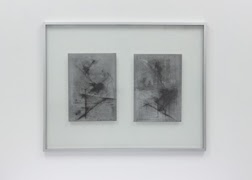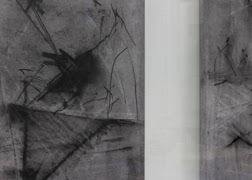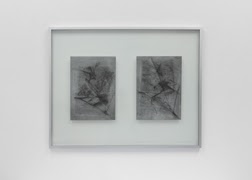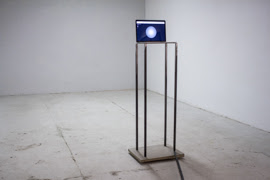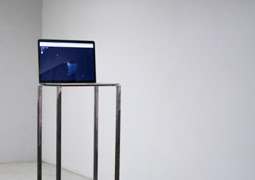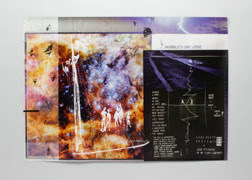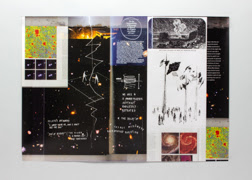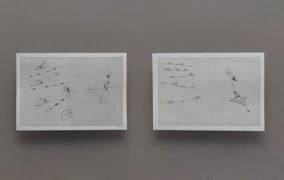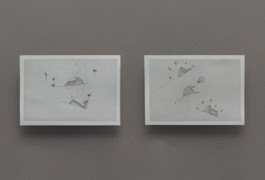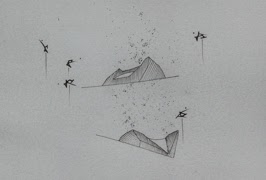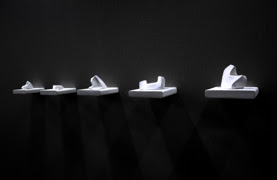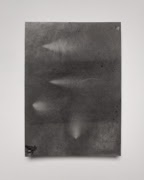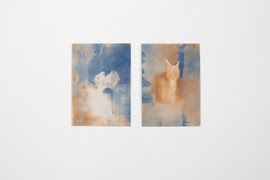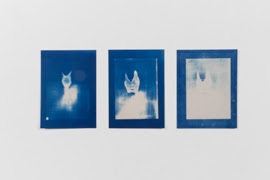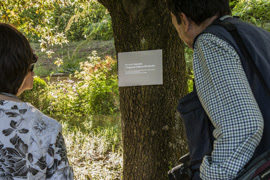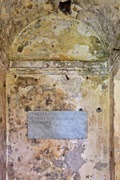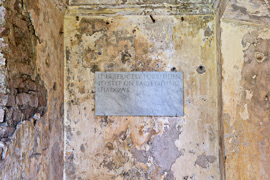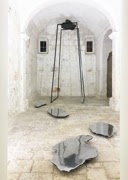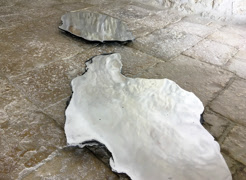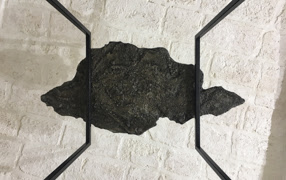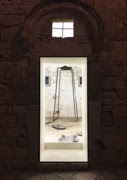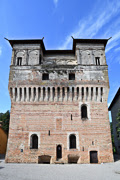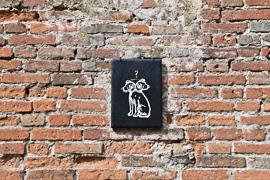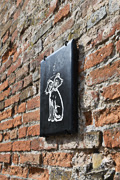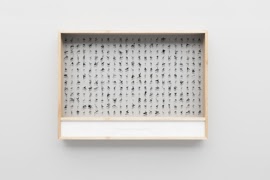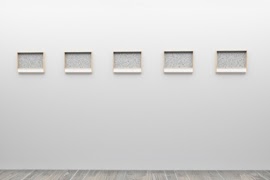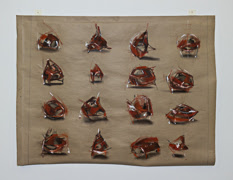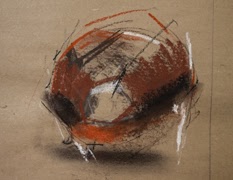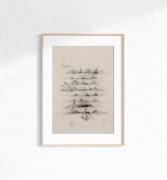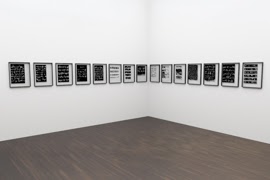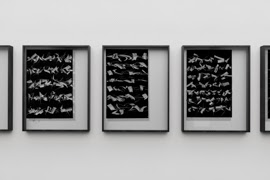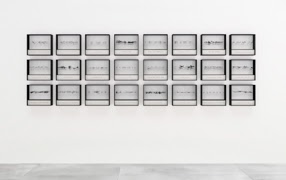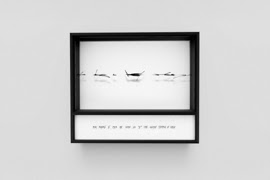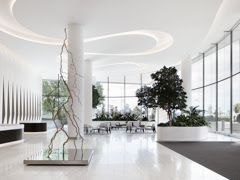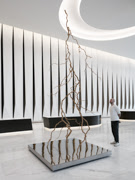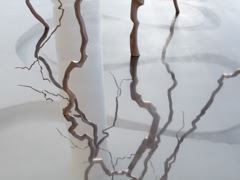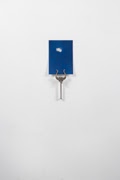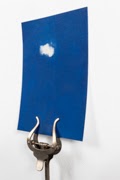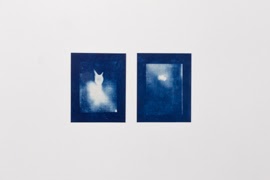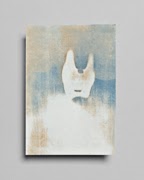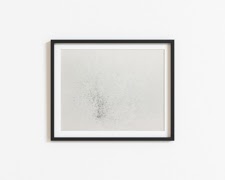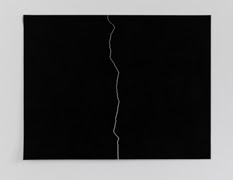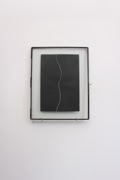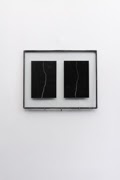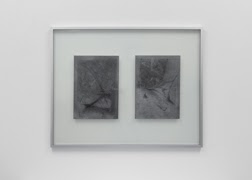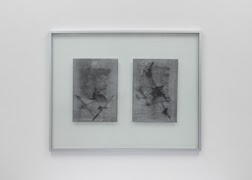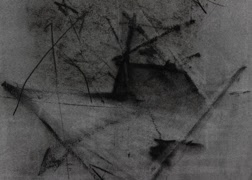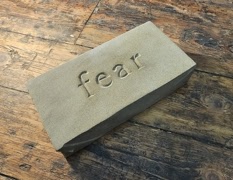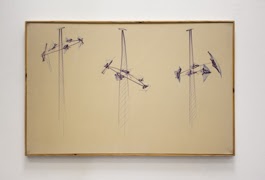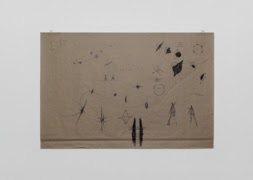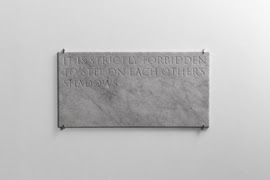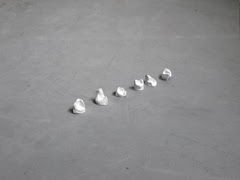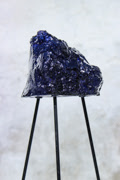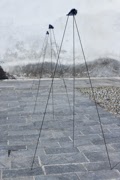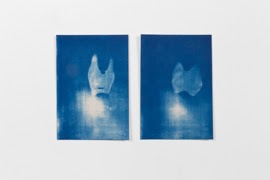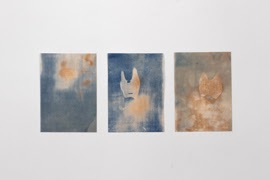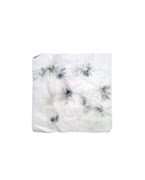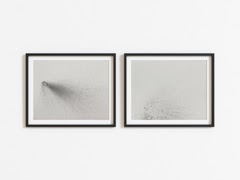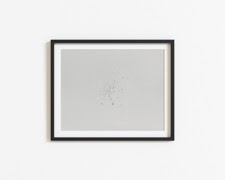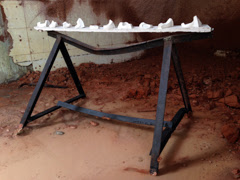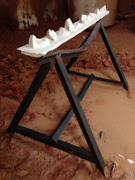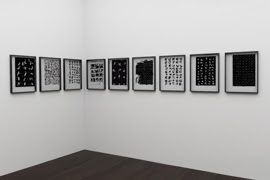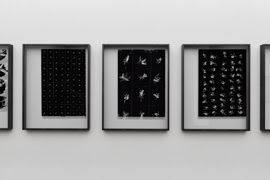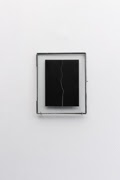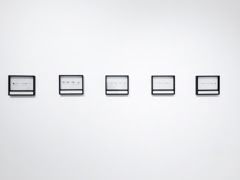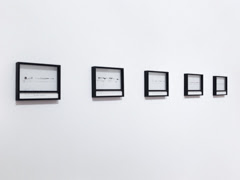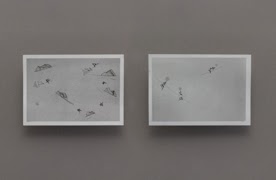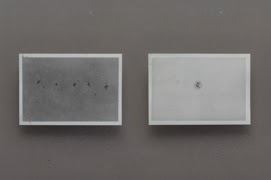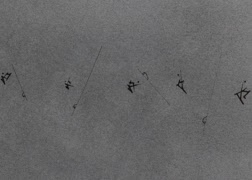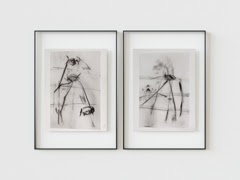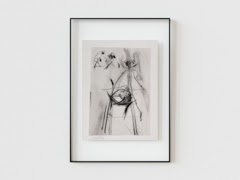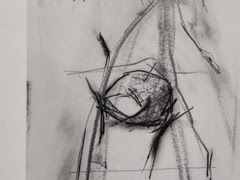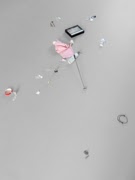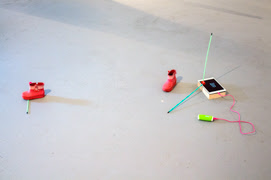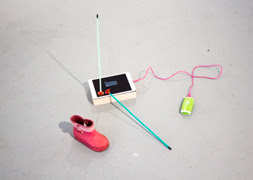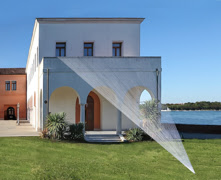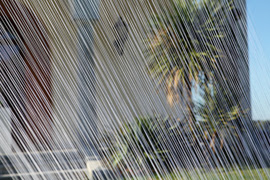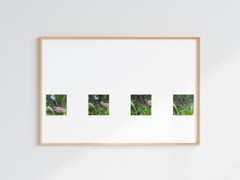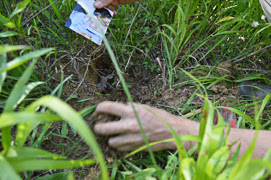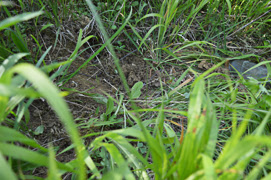Dartizio’s work navigates the liminal space where memory, vulnerability, and the fragility of existence converge. Rooted in deeply personal experiences, his art acts as both a gesture of healing and an exploration of the intangible—a search for meaning that begins in the specifics of his own life and extends outward to universal themes of loss, resilience, and connection.
Fabio Dartizio’s artistic journey began with an early fascination for graffiti writing. This raw, expressive form of mark-making laid the foundation for his later inquiries into gesture and repetition. In works like Elementari , Dartizio engages with calligraphy as a subject freed from signification, focusing purely on the gesture and the sign itself. Over time, the repetition of these signs evolved into more defined shapes and feelings, leading to works like Signs of Awakening and Nightmares. Here, the repeated gestures and forms take on a profound clarity, symbolizing the awakening of buried traumas and the surfacing of deeply personal fears. This exploration of repetition extends into three dimensions in works like Frasari, where the recurring shapes underscore the spatial and material possibilities of revisiting forms, echoing the persistence of memory, the compulsion to return to the past, and the need to remember.
From the abstraction of repeated signs, Dartizio’s work gradually translates emotion and introspection into words and formulations. This transformation begins in the series Aforismi, where gestural calligraphy merges with textual content imbued with meaning, and continues into bodies of work like Set In Stone and As If . These lapidary works connect to Dartizio’s broader themes of memory and mortality, linking the enduring weight of stone with the ephemeral nature of words as vessels for uncertainty and emotional states. In Set In Stone (shadows), the engraved phrase “It is strictly forbidden to step on each other’s shadows” transforms an authoritative rule into a poetic reflection on personal boundaries and shared space. The paradox embedded in the permanence of stone invites viewers to contemplate the fragile interplay between connection and division, where even intangible shadows become a metaphor for emotional presence and distance.
In Tears , the act of tearing and reassembling paper becomes a metaphor for fleeting fragility and reconciliation, with the vertical beams of light emerging from the process symbolizing resilience amid disruption. These beams, evocative of lightning, intertwine with The Stranger , a realistic bronze sculpture that freezes the transient motion of a lightning strike. In both works, lightning becomes a potent metaphor for connection and rupture, capturing the density of an instant that can simultaneously overwhelm and illuminate.
In Nana Bianca, Dartizio transforms a simple action—tearing a photograph and burying its halves into the highest and lowest points of a chosen area—into a meditation on separation and the boundaries of existence. By dividing and concealing the image, the work echoes the themes of fragmentation and reconciliation present in Tears. Yet, where Tears focuses on light and resilience amid rupture, Nana Bianca grounds the exploration in the earth, presenting separation as both a poetic gesture and a confrontation with the void. First performed during a residency in a rose garden in Asti, Italy, this ritualistic act transforms into an enduring metaphor for the impermanence and fragility of memory. The same portrait also appears in Family Portrait , extending the reflection into a broader narrative of shared and personal histories.
Per Aspera Ad Astra complements this exploration by shifting focus from defining boundaries to traversing them. Presented as a temporary installation during the Venice Film Festival, the work features a single thread that spans the highest and lowest points of a space, weaving a physical connection across distances. Where Nana Bianca creates a void by marking separation, Per Aspera Ad Astra seeks to bridge it, embodying the enduring interplay of fragility and perseverance. This act of linking, rather than dividing, transforms the gap into a space of possibility, offering a poignant meditation on the resilience required to navigate loss and the effort to unite fragmented narratives.
At the heart of Dartizio’s work is a fascination with the fleeting and the monumental, particularly as it relates to the tension between life and death. In Breath on Paper , cyanotype prints of mist left by breath on glass evoke the intangible presence of a final exhalation, marking the threshold between life and death. In a few instances, the works—titled Breath on Paper (clip)—are secured by antique clarinet lyre music clips, objects once used to hold the rhythm of performance. These additions frame breath as both an ephemeral trace and a closing note in the cadence of life, underscoring the liminal space between presence and absence, the fleeting and the eternal.
This exploration of transience and reflection continues into Why Did You Separate Me from the Earth?, an installation featuring sand-casted aluminum puddles, one elevated to three meters, where reflections oscillate between joy and melancholy, matter and spirit. The recurring motif of puddles in Dartizio’s work often evokes water as a symbol of tears—quiet, still, and deeply personal. In this context, water is not only a physical element but also an emotional one, where each puddle might be read as a silent manifestation of grief, vulnerability, and the catharsis of release. The artist’s drawings of teardrops, Untitled (Tears Drawing), further explore this theme, capturing the delicate and poignant nature of tears as they fall, gather, and sometimes remain suspended in time, expanding the metaphor of emotional release into visual form.
Shifting from grounded personal narratives to an existential inquiry, Dartizio expands his exploration of memory and presence, seamlessly bridging the earthly and the astral. The vastness of the cosmos reflects the emotional landscapes of separation and reunion, transforming the void left by absence into a space of reflection. Celestial forms become metaphors for endurance and healing, their distant yet enduring presence mirroring the nature of human memory.
This shift from the intimate introspection of puddles to the expansiveness of the cosmos invites the viewer to reconcile absence with meaning and find solace in the act of seeking. In I Try to Find You, Yet You Are Not Here, scattered bronze forms evoke a starry sky, merging the universal act of stargazing with a deeply personal meditation on grief and longing. Similarly, The Desire to Stay in the Sun, a web-based artwork, uses planetary orbits to trace patterns of separation and connection, serving as a poignant metaphor for distance and attachment. In Supernova, fragmented yet interconnected forms suggest the explosive transformation of a dying star, carving out a void that mirrors the emotional rupture of loss. This absence, tangible and gravitational, compels the viewer to consider how absence and fragmentation can redefine presence and meaning.
At the foundation of Dartizio’s multifaceted practice lies the act of Drawings—a medium that not only precedes many of his final works but also exists as a form of art in its own right. Resembling the intention of a draftsman’s technical sketches, these drawings chart the contours of a lightning strike, trace the fragile connections of celestial forms, or guide the creation of a sculpture capturing the explosive transformation of a dying star. Offering a glimpse into the iterative nature of his process, these works reveal how each medium becomes a vessel for his inquiries into memory, vulnerability, and the complex interplay of presence and absence. Dartizio’s work not only presents its final form but also invites viewers into the reflective process that brought it to life, revealing the dynamic relationship between vision and materiality.
